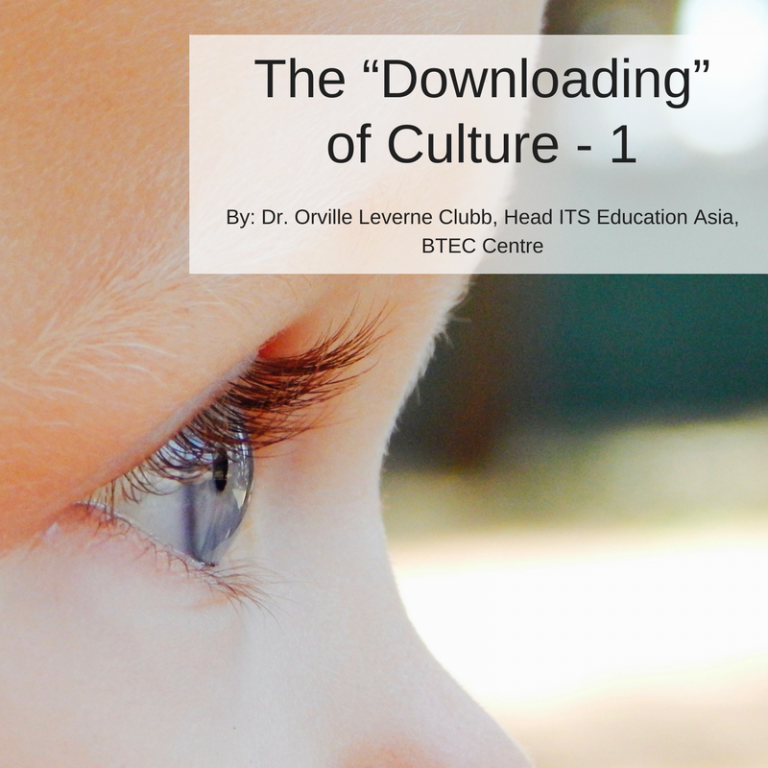* Terms and Conditions apply.


“We seldom realize, for example that our most private thoughts and emotions are not actually our own. For we think in terms of languages and images which we did not invent, but which were given to us by our society” – Alan w. Watts

The other day, I heard a good explanation of culture from Danny Harrington, our ITS Founder. As a geographer, he sees that a culture is developed from the geographical area where the members of that culture are living. The culture is based on the climate, soil, flora, fauna of the area. Basically, the culture rises from the dirt of a geographic area. I gave my views on culture acquisition in the discussion.
In a paper I started to write prior to retiring, I used a modified version of Piaget’s Four Stages of Development to give methods of how a culture is learned. I called the methods “Stages of Cultural Acquisition”. I titled the original paper “Downloading of culture” because I used a Computer metaphor. The new born was “hardware” with a “BIOS” and culture was the “software”
According to Piaget, a human baby is born into the “Sensorimotor Stage” of life. That is, the new born is motivated by instinct and rapidly learns about objects in its physical environment. Learning is of their relationship to these objects and key people of the home environment such as the mother, father, other siblings, caretaker, etc. The baby normally learn how to walk, eat solid foods from the home diet, other basic motor skills and very basic spoken language of the key people in the stage. The skills learned by the baby in this stage, varies from culture to culture but has many basic common skills such as walking, etc.
From about 1.5 years to around 5 to 7 years of age the new child is in, what I call the “Culture Introduction Stage”, which is Piaget’s “Pre-Operational Stage”. If a child is born in Hong Kong to Hong Kong parents, the child continues to learn the family dialect, food, how to interact with other members of their family’s culture and such concepts as family ranking, social expectations, dress codes, etc. of the family’s Chinese culture. Likewise, if we are born in, say, in a region of the UK or US, of local parents, we are “downloaded” with the culture of the region that we are born in and are taught how to interact in that region.
By the time the child is between 5 to 7 years old they have been given the basics of their home key people’s culture. We now move to the “Cultural Fundamentals Stage” which is Piaget’s “Concrete Operational Stage”. Through the home, people key to the new child will have a good basic operational understanding of their culture and language and their uses. The child now starts formal education in the form of schools outside of the home environment to enhance the knowledge of their environmental culture. At this point, the key people in the environment outside of the home are teachers and peer-groups. Schools are outside of the protection of the home and become the primary source of learning. Prior to this stage of development the new born has relied on their home key people as well as family affiliations such as extended family, religion, etc to give them their cultural knowledge and protection. A major conflict can occur if a child has been given a different culture by the home key people to that of the environmental culture of new formal school. As a child that moved from the Deep-South of the US to California while in primary school and had to deal with difference peer-groups, I can tell you that school peer-groups can be very mean and unwelcoming.
In my future blog “ The Downloading of Culture – 2” I will elaborate on the potential consequences of a person in a environment that is foreign to their initial home learned culture.